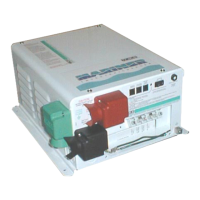,167$//$7,21
&RS\ULJKW7UDFH(QJLQHHULQJ&R,QF 7HOHSKRQH 3DUW1XPEHU
WK
6WUHHW1( )D[ 2FWREHU
$UOLQJWRQ:$86$ ZZZWUDFHHQJLQHHULQJFRP 3DJH
,QVWDOODWLRQ
This section describes the requirements and recommendations for installing the Mariner
inverter/charger. These are only guidelines. The National Electrical Code (NEC), American Boat
and Yacht Council (ABYC), and the Code of Federal Regulations (CFR’s) are the controlling
authorities. Their standards and regulations are described here in general for your convenience, and
are not represented as comprehensive or complete. For comprehensive and complete official
standards and regulations, write the addresses listed below:
Title 33, Part 183: Code of Federal Regulations
Superintendent of Documents,
POB 371 954
Pittsburgh, PA 15250-7954
202-512-1800 or FAX 202 512 2250
ABYC, Incorporated
Standards and Recommended Practices for Small Craft
3069 Solomon’s Island Road,
Edgewater, MD 21037-1416.
410 956 1050 or FAX 410-956-2737.
NFPA - National Fire Protection Association
National Electrical Code Handbook
One Batterymarch Park,
PO Box 9101
Quincy, MA 02269-9101
617-770-3000.
6DIHW\ ,QVWUXFWLRQV
The Mariner inverter/charger is not ignition protected and may not be located in an engine
compartment with gasoline-fueled engines under any circumstances. It is ETL listed to UL Standard
458 "
Power Converters/Inverters and Power Converter/Inverter Systems for Land Vehicles and
Marine Crafts
" and Canadian CSA-C22.7 No. 107.1-M91, and conforms to ABYC standards A-20
"
Battery Charging Devices
" and A-25 "
Power Inverters
."
Before beginning the installation of the Mariner inverter/charger, read all instructions. Disconnect any
and all sources of AC and DC power to prevent accidental shock. Disable and secure any and all
AC and DC disconnect devices and automatic generator starting devices.

